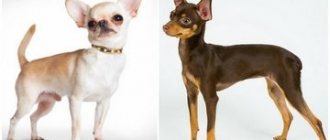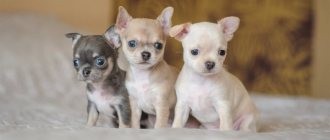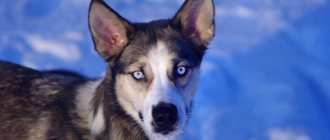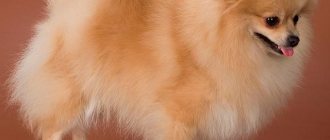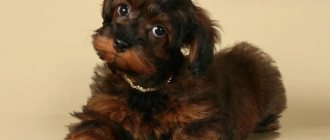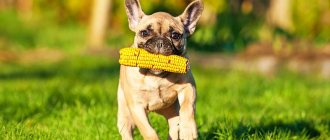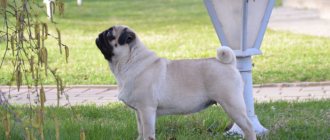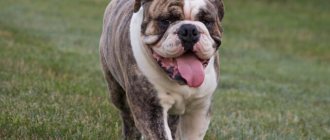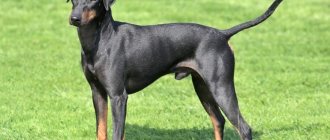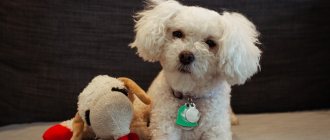Perhaps you were looking for a description of the Mini or Super Mini Chihuahua breed, but came across an intriguing title in the search results that leads to this page. Believe me, the information that I offer for your information will not disappoint you and will save you from possible unplanned material expenses in the future.
I will tell you how unscrupulous sellers deceive and offer Chihuahua puppies under the guise of the “mini” and “super-mini” classifications that are popular today. At the same time, they do not hesitate to sell puppies at unreasonably high prices. Not only is such a classification not accepted by authoritative international and Russian canine federations.
No, I am not an ardent opponent of miniature Chihuahua dogs. Not at all, there are also decent mini and super mini Chihuahua puppies. But first things first.
The origin story of the miniature chihuahua
There are many versions of how the breed appeared. According to one of them, it has been going on for about ten centuries. Cave paintings of small dogs were discovered in the territory of the Mayan and Aztec tribes, and their elegant figurines were found in ancient Mexican temples. The version was confirmed by the results of excavations - animal skeletons were found that were similar in appearance to the structure of today's Chihuahuas. They were buried next to the leaders. It is logical to conclude that mini-dogs at one time enjoyed love, fame and respect.
The Mexicans called them Techichi, and the Europeans, who first saw such dwarf animals, gave the name Chihuahua from the state where they first discovered them. At first the dogs had long hair, then, after crossing with the Chinese Crested, they developed a short-haired look. Over the years, the name changed somewhat and the breed began to be called Chihuahua.
Nutrition
Chihuahuas eat little, so feeding the dogs is easy and inexpensive. A balanced diet is necessary, otherwise the pet will get sick.
This is interesting: Review of food for small breed dogs
From 7 months, puppies are switched to two meals a day. Until this age, pets are given food 4-5 times a day in small portions, gradually reducing the number of feedings and increasing their volume.
Expert opinion
Anna Abramenko
An avid dog lover. Experience in veterinary medicine since 2009.
Ask a Question
Healthy foods for a mini dog are: eggs, rice and buckwheat porridge, boiled and fresh vegetables, fruits, sea fish, veal, chicken. Fried and smoked foods, fatty meats, sweets, flour products, and pickles should be avoided in the diet.
Curious facts about pocket Chihuahuas
Mini Chihuahuas have become incredibly popular recently, so it is not surprising that many interesting and curious facts are associated with their name:
- The ancestors of miniks were much larger than modern pocket dogs.
- The breed is a long-livers, some representatives lived up to 20 years.
- The owners of the smallest Chihuahuas were Hollywood actresses Paris Hilton, Marilyn Monroe and others.
- Christopher Columbus brought dogs to Europe.
- A little Chihuahua named Gidget starred in Legally Blonde and became a famous movie dog.
- The pocket dog has the largest brain in relation to body size, but this does not mean that it is smarter than everyone else.
- Most puppies are born with an open fontanel.
- Mini Chihuahuas have excellent hearing.
- The first celebrity owner of the miniature breed was the Italian opera diva Adelina Patti, who received the dog as a gift from the Mexican President.
Health problems
Little Chihuahuas should receive regular vaccinations. The first vaccinations are given by the breeder, which is reflected in the veterinary passport. Also, we must not forget to treat the animal from fleas, worms and ticks in a timely manner.
Miniature Chihuahuas are not the healthiest dogs. The smaller the size, the more health problems. They are prone to hydrocephalus and hypoglycemia. In the latter case, the dog often faints. If this happens, the animal needs to be shown to a veterinarian immediately. Glucose injections help relieve an attack.
And the owner should remember that the pet:
- Increased physical activity should not be given;
- a strict feeding regime is indicated (and food is divided into small portions);
- Sometimes you need to pour sweetened water.
Chihuahuas are prone to obesity, and excess weight can provoke bone diseases. Another common problem is tartar.
Types of mini Chihuahuas
Mini Chihuahuas are divided into two types depending on the type of coat - long-haired and short-haired. It is impossible to determine the type immediately after birth. The final formation of the structure and type of coat occurs only by the age of three.
Smooth-haired
Their coat fits tightly to the body, while it is thick and smooth. The spine is soft, the undercoat is very small or completely absent. The longest hairs are located in the neck and tail. Despite their short hair, dogs shed more than long-haired dogs; they need to be brushed weekly with a massage brush or rubber glove.
It is believed that smooth-haired mini-chihuas are more active, temperamental, and less easy-going than long-haired ones.
Longhair
Mini Chihuahuas belonging to this species have thin, long, silky and sometimes wavy hair. Despite the attractiveness of curliness, it is considered a breed defect. In long-haired dwarf Chihuahuas, the undercoat can be thick and fluffy, while in some individuals it is completely absent. Hairs of maximum length are located on the back of the legs, on the stomach, tail, ears, and fringes are visible in the collar area. Once every two days, the Chihuahua is combed with a brush and slicker brush. Model haircuts are performed for participation in competitions, hygienic haircuts are performed to maintain the cleanliness and beauty of the coat.
Reviews
- “I thought for a long time about purchasing a Chihuahua. Or rather, I decided on the breed right away, but it was the opinions of others that stopped me. Like, useless, evil, always barking. I made my decision a year ago and I don’t regret it one bit. My girl is very homely, affectionate, and loves to soak up the sofa with me. On average, the breed has no more problems caring for than other pets. I recommend it to anyone who still doubts.”
- “I’m happy with my pet, he’s sociable, interesting, and takes up almost no space. Our Chihuahua Max is smooth-haired, specially chosen so that he sheds less. In vain. If you don't brush your dog regularly, you'll get prickly, hard hairs everywhere. Removing them from the sofa and carpet is somewhat difficult. Otherwise there are no complaints."
- “We were unlucky with the dog. We bought a puppy, but six months later we gave the pet away to good hands for free. A very vocal dog was caught. He barked at the sounds from the entrance, a car passing under the window, dogs barking in the distance. The Chihuahua also whined often. If noise doesn’t bother you, then this option is quite suitable.”
Features of the mini-Chihuahua breed
Mini Chihuahuas are very small and attractive dogs, their weight does not exceed 1.7 kg. In character and behavior they are not much different from representatives of the “standard” category, whose weight is from 1.5 to 3 kg. Minis are just as brave, proud and proud, devoted to their owner, have a lively mind and intelligence, but sometimes they become stubborn and stop obeying.
The dwarf size of the dog allows you to take it with you everywhere - on a visit, to a restaurant, on trips. Sometimes a small value is associated with underdevelopment and weakness of representatives of the standard species due to diseases and congenital pathologies. To avoid choosing such a puppy, you should consult a veterinarian and rely on the opinion of a specialist.
What clothes do you need?
Clothes needed for these dogs include an insulated snowsuit and a demi-season suit designed for rainy weather.
For cool days, you need to purchase a sweater, vest or blanket, which should be worn at home when the air temperature drops to +15 degrees.
Mini Chihuahuas also need winter and demi-season boots or sneakers, as shoes prevent the skin on the pet’s paws from being corroded by reagents and protect the pet from accidental cuts.
Description and characteristics of the mini-Chihuahua breed
In the RKF standard there is no mention of the category of mini-dogs in the Chihuahua breed. It doesn't exist officially. However, this classification is used by breeders when selling dogs. The situation is similar in the USA and European countries. Tiny babies are in unprecedented demand among potential buyers; they are willing to pay several times more for them than for standard-sized individuals. Super-mini Chihuahuas, whose weight does not exceed 1 kg, are even more in demand.
At the birth stage, it is difficult to determine which category the adult dog will belong to, but breeders rely on the size of the parents - the smaller they are, the higher the likelihood of getting a mini-Chihuahua. It is impossible to predict everything; there are often surprises.
Breed standards
The characteristics of the mini category in terms of basic parameters coincide with the standard of the largest representatives of the breed. The main difference between mini Chihua dogs is the size of the individuals (height at the withers - 14-16 cm, weight 0.5-1.7 kg). General characteristics, according to the standard, are as follows:
- The body is compact, in bitches it is more elongated, the body proportions are close to square.
- The head is apple-shaped, the muzzle is short and wedge-shaped.
- The nose is small, slightly upturned.
- Lips are light, there is no drooling.
- Presence of teeth – 42 (22 lower and 20 upper), straight or scissor bite.
- The eyes are brown, less often light, large.
- The ears are erect and large.
- The back is strong, straight, the lower back is covered with muscles.
- The chest is voluminous, barrel-shaped.
- The tail is set high, in the shape of a crescent.
- The coat is short or long, the color is varied.
What does an adult mini Chihuahua look like?
Most dogs of different breeds look touching when they are puppies, but after they grow up, there is nothing left of naivety and “childishness”. Their owners still adore them, but the former enthusiasm for seeing their pet is no longer there. This fact does not apply to mini Chihuahuas that have a “baby face” or “baby face” type. Its distinctive features are huge round eyes, an apple-shaped head, and an upturned nose. This combination creates a perpetually surprised expression on the little face.
Meanwhile, “baby-face” is a clear sign of dwarf degeneration, therefore, with further reproduction of individuals belonging to the mini category, the breed may simply disappear completely.
The presence of a “baby face” type can be determined by taking some measurements:
- Find the distance from the base of the nose to its tip.
- From the base of the nose to the back of the head.
- If the ratio of the first value to the second is 1/3, the dog has a “baby face” type.
Mini Chihuahua size and weight
The birth of small offspring from mini mothers and fathers is not always guaranteed. More likely, they will appear in the litter of ordinary standard Chihuahuas. A huge mistake is to limit the food puppies eat so that they do not grow and remain within the category. Lack of food can lead to the development of pathologies and exacerbation of chronic diseases.
At birth, a mini-Chihuahua weighs from 90 to 120 g. In a month, the weight triples, reaching 1100-1400 g in six months. An adult dog weighs 1100-1700 g, its height at the withers is 14-16 cm.
Dog's coat and color
According to their coat type, mini Chihuahuas come in short-haired and long-haired varieties. The first type is much more common. The hair of this dog is soft and shiny. In some areas of the body their lengthening is noticeable. The undercoat is fluffy or absent. Long-haired mini-Chihuahuas have even more delicate, silky fur. The range of its colors is varied. Among the most common colors:
- black;
- white;
- black and white;
- ginger;
- brown;
- black and tan.
It is problematic to breed silver-gray or blue puppies, since even in the standard this is a defect associated with breed diseases.
Character and behavior
Despite their dwarf size, the character of the mini-Chihuahua is quite capricious. The dog may be stubborn, capricious, and not respond to the owner’s commands. While walking, she can run away, get into fights with other animals, and start barking at strangers. This behavior is explained not only by bad character, but also by mistakes in upbringing. A friendly, adequate and balanced pet can be raised only with regular training, persistent upbringing and training.
Minis are able to run, play, frolic endlessly until they run out of strength. You should measure physical activity, stop games in time, give your Chihuahua something to drink and rest.
The pet is tolerant of all family members, but becomes attached, adores, protects and is jealous of one owner. At the slightest danger, he rushes to defense, without thinking about himself and the fact that the intended enemy is much larger and stronger. He does not tolerate loneliness well; he may even shake from a stressful situation.
It is not difficult to provoke a minik into aggression - if a child accidentally presses and causes pain, he may bite the baby. Therefore, you can only get Chihuahuas when children grow up, at the age of 10-12 years.
Practical recommendations for choosing a future puppy
Despite the emotions that micro-Chihuahuas evoke, breeders warn future puppy owners: the smaller the expected size of an adult dog, the higher the risk of developing health problems for the dog.
As a rule, when deciding to buy a mini-sized dog, a person agrees to overpay impressive amounts, because the smallest puppy from the litter costs more than his brothers. In addition to the size of the puppy, the price is determined by other factors, for example, the presence of a baby face or a strong body.
As noted earlier, blue-colored dogs are considered incredibly rare and beautiful Chihuahuas.
But high health risks force breeders to reject such individuals, without even taking into account compliance with breed standards.
When choosing a puppy from the mini category, there is no particular need to focus on compliance with breed standards, since micro Chihuahuas are not allowed to show and do not take part in breeding. Due to their dwarf size, females from the mini category are not able to bear and give birth to offspring on their own. The risk of death for the puppies and especially for the dog itself is too high. Therefore, when buying a girl Chihuahua dog, it is better to take care of her sterilization in advance. To carry out the procedure, it is advisable to contact a veterinary clinic where specialists already have experience in operating on such small animals. The weight and size of mini Chihuahua dogs requires a careful and attentive selection of medications and their dosage.
Unfortunately, it is often possible to observe too large a head size and an enlarged fontanel in puppies from the mini category. These features signal the possibility of developing hydrocephalus. No one, even an experienced specialist, can accurately predict the manifestation of pathology in the future in the period up to 3-5 months, but differences in behavior in such puppies are noticeable at an early stage. Babies sleep more than other puppies, the little ones develop more slowly than their counterparts, and they are often bothered by headaches. However, all puppies should not lose their appetite and interest in the world around them.
No one knows how to choose micro-Chihuahua puppies from one litter. It is likely that both standard and micro babies will be born from one bitch. Nuances that can confuse an inexperienced person:
- When a bitch gives birth to many puppies (multiple pregnancy), all the babies are born very small. Up to 3 months, such babies develop slowly, gain weight for a long time, and after this period there is a sharp jump in growth.
- If there are only 1 or 2 puppies in the litter, then they are most likely large in size. Babies eat actively, grow quickly and gain weight evenly. However, if we are talking about micro babies, then their growth will slow down after 3 months.
Under no circumstances should you respond to requests or advertisements from experienced breeders about super mini Chihuahua dogs. From the nuances described above, it becomes clear that the puppy is actually purchased at random. Therefore, it is not recommended to purchase a puppy before 3 months of age. The best option, which gives a guarantee of more than 50%, is an older puppy that has already formed, then you can be confident in your choice.
How old do small dogs grow?
The childhood of dwarf Chihuahuas lasts from birth to three months. In the next two they grow intensively, and after five, physical development slows down and even stops. The puppy is in adolescence, looks rather awkward and angular - small head, narrow chest, long legs.
At six months, the teeth begin to change to permanent ones and the first shedding begins, due to which bald patches and bald spots appear on the mini’s body. Your pet's body may not have enough calcium, causing its ears to fall off. During this period, you need to introduce special mineral and vitamin supplements into your diet.
Puberty occurs at nine months - bitches have their first heat at this time. Males are ready for breeding at one year. Chihuahuas become adults, their growth stops, but they are finally formed at the age of one and a half years.
Animal diseases
Miniature Chihuahuas can be predisposed to a number of diseases, namely:
- Hydrocephalus.
- Epilepsy.
- Dysplasia.
- Rheumatism.
- Stenosis of the pulmonary trunk.
- Heart failure.
- Atrophy of the heart valves.
- Urolithiasis disease.
- Retinal atrophy.
- Cataract.
- Dermatitis.
- Demodecosis.
- Food allergies.
Chihuahuas are also prone to hypoglycemia, obesity, and dental and oral diseases..
Care and maintenance of a dwarf chihuahua
To ensure quality care for your Chihuahua, you need to prepare the necessary equipment and consumables:
- mattress, bed or special house;
- toilet tray, filler, disposable diapers;
- soft bristle combs and steel combs;
- metal or ceramic bowls;
- shampoo, lotion, toothpaste and brush for dogs;
- nail clipper
Caring for a Chihuahua is not difficult; you need to monitor the condition of its fur, ears, eyes, claws, vaccinate it on time, and, if necessary, treat it.
Feeding rules
The frequency of feedings and the diet of a Chihuahua depend on age, activity, metabolism and individual characteristics. Up to three weeks, the puppies are fed by the mother, then they are given complementary foods six times a day, from three months to six months - four times a day, from six months to a year - three times, from the age of one year they are transferred to the adult regimen - twice a day. Mini Chihuahuas are given food in the morning and evening, with an interval of 12 hours. It is acceptable to give treats between breakfast and dinner in the form of pieces of fruit, sour cream and boiled eggs.
When feeding dry food, follow the dosage recommended by the manufacturer according to the age of the dog. Natural food must meet the required calorie content (40 kcal per kg of weight).
The diet of an adult pet should include:
- lean boiled meat (rabbit, turkey, veal, beef);
- sea fish without bones after heat treatment;
- chopped vegetables (carrots, pumpkin, zucchini);
- fruits and berries (apple, melon, raspberries, currants, blueberries);
- porridge (buckwheat, millet, pearl barley, rice);
- fermented milk products (cottage cheese, kefir, unleavened cheese).
Training and education
Minik owners do not always understand how to train and what to teach a pocket dog. However, this is an animal with its own character, so in the process of education it is necessary to achieve specific results:
- Obedience, unquestioning submission.
- Performing the commands “Sit”, “Lie down”, “Voice”, “No”.
- Collar and leash training, toilet training.
- Do not damage furniture or other items.
- Socialize with the outside world.
They begin raising and training from two to three months, they do it regularly, persistently, without giving the puppy any concessions, but also without being rude to him.
Frequent illnesses and life expectancy
The life of Chihuahuas depends on the conditions of detention, quality of food, complete care and hereditary factors. They are classified as long-lived - 15-20 years is quite a long time for dogs. The average duration of the mini category is less than that of the standard category and is 9-12 years.
They are in good health, but genetically they are predisposed to a number of diseases: hypoglycemia, obesity, heart disease, hydrocephalus, tracheal collapse. Taking care of your pet helps minimize health problems and prevent complications.
Chihuahuas are sensitive to low air temperatures and may suffer from ARVI. To protect the mini, in cold weather they put on waterproof overalls and boots, and the walking time is reduced to 20-30 minutes.
Caring for small dogs
For Chihuahuas, it is necessary to create living conditions in the apartment - remove dangerous objects, determine a place where it is convenient to hide and rest, and prepare everything necessary for the animal’s hygiene.
Ears are cleaned as they become dirty from accumulations of wax and dust using cotton swabs and lotion, eyes are wiped daily with boiled water, teeth are cleaned of plaque using a special brush. Nails are inspected and trimmed twice a month using a nail clipper. You can bathe your dog with shampoo no more than four times a year. The rest of the time, the paws are washed with clean, warm water after a walk.
Character
Chihuahuas, despite their tiny size, are brave and resilient. They are distinguished by their devotion to their owners, intelligence and friendly attitude towards other animals and people. They are playful and affectionate pets that make wonderful companions.
If a Chihuahua is not raised correctly, it can grow up to be cocky, aggressive, cowardly or hysterical.
This happens especially often with overly caressed and spoiled dogs, which from an early age were allowed by loving owners to do whatever they wanted. This is why it is very important to understand that, despite its tiny size, the Chihuahua is a dog and that it too needs proper education and training.
Pros and cons of a small chihuahua
Mini Chihuahuas have become very popular. This is explained by their advantages:
- loyalty and devotion to the owner;
- compactness;
- ease of walking;
- food efficiency;
- good health;
- neatness and cleanliness;
- mental stability;
- ease of adaptation to new conditions;
- high intelligence.
There are also disadvantages:
- increased susceptibility to injury;
- difficulties of reproduction;
- difficulties in training and education;
- jealousy and obsession;
- Not suitable for communicating with small children.
Feeding
You can feed dogs of this breed both industrial food and natural food. A pet's diet during natural feeding should consist of the following products:
- fresh meat;
- raw eggs;
- vegetables;
- fruits;
- offal;
- fish;
- greenery.
Dry food must be selected taking into account the dog’s small teeth, which will contain small pieces, specialized for miniature breeds.
The peculiarity of the breed is its tendency to gain excess weight. The owners' task is to monitor the amount of food the pet eats.
How to choose a mini Chihuahua puppy?
When choosing a dwarf Chihuahua, you should pay attention to its appearance. The characteristics must meet the standard, the ears must be clean, the nose must be wet, and the eyes must not be watery. A healthy coat shines, the skin does not have any rashes or redness. The optimal weight of minis is from 0.5 kg to 1.7 kg. The bite is correct if the upper jaw covers the lower jaw. A healthy puppy is active, friendly, playful, while a sick puppy is apathetic and aggressive.
Sometimes future owners cannot choose the gender of their dwarf Chihuahua puppy - whether to buy a male or a female. Both options are good, but we must take into account that the girl will go into heat twice a year, pregnancy and difficult childbirth are possible. But these problems can really be solved, especially since bitches have better character, they are calm and clean.
Little Chihuahua boys are more cocky, can get into fights, are playful, and are more difficult to train.
Popular colors
The Chihuahua dog breed is notable for its wide variety of colors.
Single-color: fawn, cream, white, black, blue, wolf, sable, brindle, red, chocolate, lilac.
Two-color: motley (white and red, white and brindle, white and blue, etc.), with tan (for example, black and tan).
Tricolor: for example, black, white and red.
NOTE!
Any of the solid colors can be supplemented with small white markings.
Where to buy, how much it costs
You should not buy a dog at a pet store or market, since the chance of acquiring a healthy and purebred one is extremely small. You should choose a specialized nursery with a good reputation:
- Pearl of dreams (Kuntsevo).
- Flower of Elves (Moscow).
- Astra Vitus (Moscow).
- Krokha-Dog (Moscow).
- Chintamani (Novouralsk).
- Lucky Beggar (Naberezhnye Chelny) and others.
The price for a mini-Chihuahua puppy starts from 20,000 rubles from private breeders and reaches 170,000 rubles in a nursery.
Training
The mini Chihuahua does not require any special training methods. But it is necessary to start raising her from childhood. She needs to be taught some behavioral points:
- Teach your dog not to climb on furniture, chew or spoil things.
- Teach him to be restrained and more obedient so that the pet does not rush to fiercely defend the owner.
- Teach your dog the basic commands “no”, “fu”, “stop”, this will help him not to run away and be less pugnacious. But any command will require many repetitions.
Dogs
The majority perceive familiar dogs normally, but are hostile towards strangers.
They bite extremely rarely, but bark often, which will provoke a response reflex in the animals. And this is already dangerous for the bullies themselves. Without any problems, you can keep more than one dog at home, preferably the same breed.
Native American roots
The pet received this fancy name from the name of the largest Mexican state. Actually, Mexico is the homeland of the Chihuahua. There are theories that this breed existed back in the days of the Toltec tribes (Indian people who lived during “medieval” Mesoamerica), who caught such dogs and domesticated them. They considered them sacred animals.
Mexican traders sold their pets in the border areas to tourists, who in turn took their purchases to the United States, and from there they were transported to Europe. In the 20th century, this breed of dog appeared in our country - Fidel Castro gave two cute puppies as a sign of friendship.
The ancient Aztecs believed that Chihuahuas could guide the soul of the deceased, driving away evil spirits. Therefore, the dog was burned at the stake along with its owner. Also, small pets quickly gained the favor of the nobility; they were even assigned a separate slave.
The photo below shows puppies and adult dogs of this breed.
Temperament
Although this is a decorative breed, it is still an accessory. Few dogs are so attached to their owners.
The most popular dog names in alphabetical order with recommendationsShar Pei - history of the breed, character traits, care and possible problems + 87 photos
American Bulldog - history of the breed, appearance, specifics and characteristics, care (100 photos + video)
The nature of the reaction to a stranger depends entirely on the temperament of the particular dog; the majority, of course, will greet him with noisy barking.
Physical exercise
Low physical activity and size are the most important reasons to buy this breed. Your dog will need daily walks and that’s it, but it’s absolutely impossible without exercise.
- Newfoundland - history of the breed, education, care + 73 photos
Brussels Griffon - history, modern appearance, standards, character and content + 77 photos
Tibetan Mastiff - features of the breed and useful qualities of the shaggy big guy + 85 photos
If you do not want to help the animal satisfy its natural needs, be prepared for the aggressive behavior of your pet (barking, gnawed furniture).
A haircut
Decorative dogs need haircuts. Long-haired Chihuahuas are no exception. It is important to accustom puppies to this procedure from early childhood. At this time, one thing is required of the dog - to behave calmly. In addition, train your pet to use a hair dryer. This is necessary in cases where you are preparing a dog for exhibitions.
Chihuahuas can be skeptical about their upcoming haircut
You can have your animal groomed either by yourself or by a professional. If you know a good groomer, it is recommended to seek his services. A haircut is required not only to make the Chihuahua look neat, but also to minimize the risk of skin diseases. The process itself is not as simple as it seems from the outside. The dog breed standard states what a dog's appearance should be. In addition, it is important to take into account the individual characteristics of the pet.
The process of cutting a Chihuahua with a clipper
It often happens that a Chihuahua is dissatisfied with the haircutting process and tries to bite the master during the work process. If you do this yourself, there is a chance that you will harm the animal. Therefore, it believes that you are trying to harm it and therefore resists. The second option why a dog doesn’t like to get his hair cut is a lack of trust in a certain person.
What to feed?
Mini Chihuahuas have special nutritional requirements.
- Feeding of puppies is carried out in strict accordance with the schedule. You can't skip meals. This can cause hypoglycemia and be fatal.
- At a young age, babies are given carefully chopped and sometimes chewed food.
- Milk and pearl barley porridge should be excluded from the diet, since the Chihuahua’s gastrointestinal tract does not cope well with them.
- The amount of feed is calculated using the formula 50-75 g per 1 kg of weight.
- An adult animal needs to be fed 2 times a day. The menu includes varieties of lean meat with minimal heat treatment, cereals, vegetables (carrots are especially healthy) and fruits (banana, apple).
